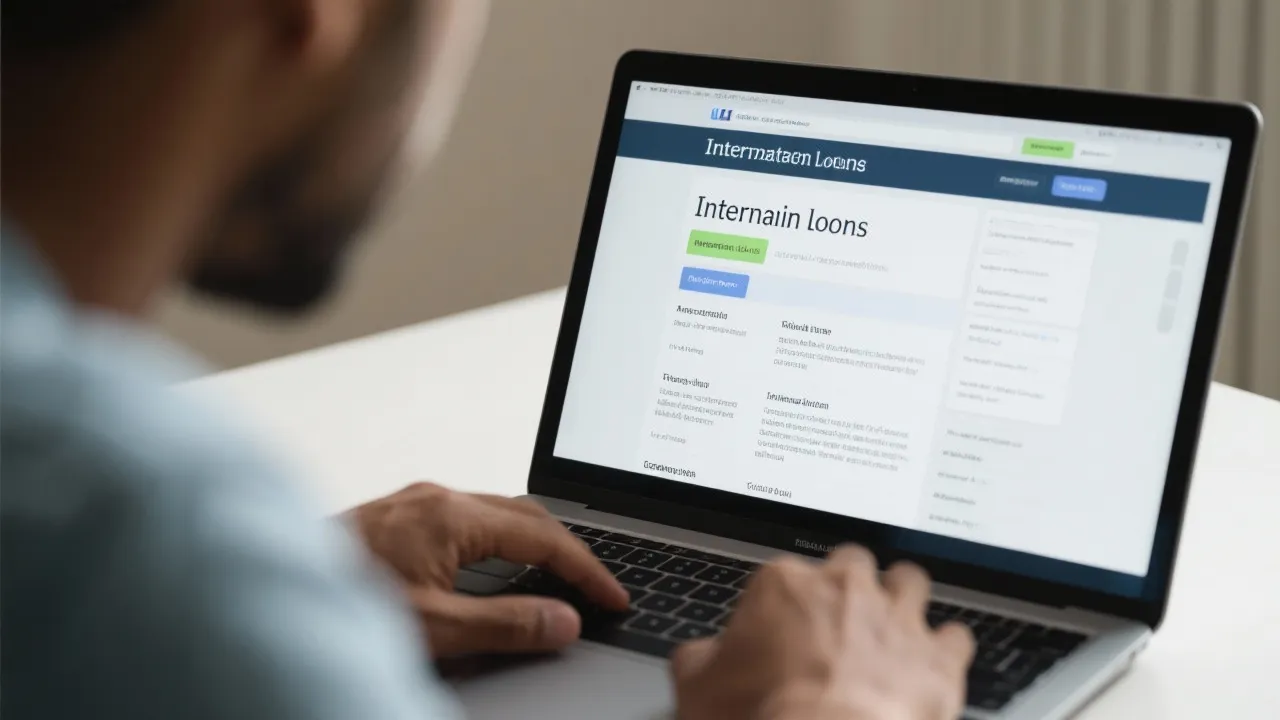"Exploring $100K Loan Options Worldwide"
This guide delves into the intricacies of securing a $100,000 loan, particularly within English-speaking nations such as the United States, Australia, Canada, and the United Kingdom. It provides an insight into available loan options, interest rates, fees, and repayment terms. Given the substantial amount, understanding eligibility, application processes, and the financial implications is crucial for potential borrowers.

Understanding the $100,000 Loan Market
When considering a significant loan, such as a $100,000 loan, understanding the details involved is crucial. Such loans are often sought for various purposes, including home improvements, consolidating debt, or funding significant life events like weddings or educational expenses. Different factors come into play, such as interest rates, loan terms, and repayment flexibility. Countries like the United States, Australia, Canada, and the United Kingdom offer diverse options to cater to these substantial financial needs.
Loans of this magnitude often come with considerable responsibilities. Borrowers must conduct thorough research and understand their financial commitments, interest accrual, as well as the implications of various loan types such as secured and unsecured loans. A secured loan, for instance, typically involves collateral, which provides lenders with an added layer of security. On the other hand, unsecured loans don’t require collateral, but they usually come with higher interest rates. The choice between these types can significantly affect your financial future.
As personal finance becomes a more critical aspect of daily life for many, understanding the loan market has never been more important. A $100,000 loan can greatly assist in achieving personal and financial goals when approached with knowledge and strategic planning.
Key Loan Providers and Their Offerings
In English-speaking countries, multiple financial institutions provide loan options for amounts up to or exceeding $100,000, each with distinct features and terms. Below is an overview of some prominent providers, highlighting the various options they offer:
| Provider | Loan Amount | Interest Rate | Repayment Terms | Fees |
|---|---|---|---|---|
| Wells Fargo (USA) | USD 3,000–100,000 | 7.49%–23.74% p.a. | 12–84 months | No origination fee; late payment fees may apply |
| SoFi (USA) | USD 5,000–100,000 | 6.99%–21.99% p.a. | 2–7 years | No fees for origination, early repayment, or late payments |
| ANZ Bank (Australia) | AUD 5,000–75,000 | From 6.99% p.a. | 1–7 years | AUD 150 establishment fee; monthly fees apply |
| Commonwealth Bank (Australia) | AUD 5,000–100,000 | From 7.50% p.a. | 1–7 years | No establishment fee; monthly fees apply |
| HSBC (Canada) | CAD 5,000–150,000 | 6.90%–21.50% p.a. | 1–5 years | CAD 0–200 origination fee; prepayment penalties may apply |
For more detailed information, refer to the official websites of these banks: Wells Fargo: [www.wellsfargo.com](https://www.wellsfargo.com), SoFi: [www.sofi.com](https://www.sofi.com), ANZ Bank: [www.anz.com.au](https://www.anz.com.au), Commonwealth Bank: [www.commbank.com.au](https://www.commbank.com.au), HSBC: [www.hsbc.ca](https://www.hsbc.ca).
Steps to Secure a Large Loan in English-speaking Regions
Obtaining a $100,000 loan involves several essential steps, especially in developed nations with stringent financial regulations. Below is a detailed guide that outlines the necessary steps to ensure a smooth borrowing experience:
- Evaluate Your Financial Status: Assess your credit score, monthly income, and existing debts to determine your loan eligibility and potential interest rate. Most lending institutions require a minimum credit score to qualify for competitive interest rates; thus, understanding your score can help you strategize on making improvements if needed.
- Research Lenders: Compare offers from various lenders to identify the most favorable terms and conditions. It’s essential to consider not only the interest rates but also other aspects such as customer service, loan processing times, and whether they offer any unique benefits like financial counseling.
- Prepare Necessary Documentation: Gather essential documents such as proof of income (pay stubs, tax returns), identification, and financial statements. Be mindful of Lender-specific requirements and be ready to provide additional documents like asset statements or proof of employment if requested.
- Submit an Application: Fill out the lender's application form, providing accurate and detailed information. Double-check all information before submission to avoid errors that may delay the process.
- Review Terms: Carefully review the loan agreement, especially repayment terms, interest rates, and fees, before acceptance. Seeking clarification on any terms you do not understand can save you from future complications.
- Receive Funds: Upon approval, funds are typically disbursed directly to your bank account. Depending on the lender, this process can take anywhere from a few hours to several days.
After securing the loan, borrowers should maintain excellent communication with the lender and keep track of their repayment schedule. This proactive management helps ensure a better credit rating and opens up future borrowing opportunities.
Repayment Options for $100,000 Loans
Understanding your repayment options is critically important when taking out a sizable loan. Here are the common repayment methods you could encounter:
1. Fixed Interest Rate Loans
In fixed-rate loans, the interest remains unchanged throughout the life of the loan. This type of loan provides borrowers with predictable monthly payments, making it easier to budget effectively. Fixed rates are often preferred during periods of low-interest rates as they shield borrowers from potential increases.
2. Variable Interest Rate Loans
Variable or adjustable-rate loans have interest rates that can fluctuate over time based on market conditions. While they often start with lower rates than fixed loans, they carry the risk of increasing rates, potentially pushing monthly payments up over time.
3. Interest-Only Loans
With an interest-only loan, borrowers initially pay only the interest for a set time, allowing for lower monthly payments at first. This can be beneficial for someone anticipating increased income or plans to sell the property before the principal payments begin, but it is essential to prepare for a significant rise in payments once principal repayment starts.
4. Flexible or Hybrid Loans
Some lenders offer flexible loans that allow borrowers to switch between fixed and variable rates or make additional payments without penalties. This flexibility can be beneficial in managing finances, particularly in changing financial situations.
Each repayment option presents pros and cons, and borrowers should choose a structure that best fits their financial situation and long-term goals.
Frequently Asked Questions
Q1: How long does loan approval take?
The approval process can vary from a few minutes to several weeks, depending on the lender and complexity of the loan. Some digital lenders offer rapid approvals compared to traditional banks, which may take longer due to their comprehensive verification processes.
Q2: Can I negotiate interest rates?
While some lenders offer fixed rates, you may negotiate with others based on your creditworthiness and prevailing market conditions. Showing a good credit profile can be advantageous during negotiations and may lead to lower interest offers.
Q3: Are there penalties for early repayment?
Policies differ among lenders. While some may charge penalties, others allow for flexible repayment options without additional fees. It is wise to clarify this before signing the loan agreement to avoid unexpected costs later.
Q4: What is a cosigner, and how does it work?
A cosigner is someone who signs the loan agreement alongside the primary borrower and agrees to take responsibility for loan payments if the borrower defaults. Having a cosigner, often someone with a strong credit history, can be beneficial in securing better loan terms or higher amounts.
Q5: What happens if I default on my loan?
Defaulting on a loan can have severe consequences, including damaged credit ratings, potential legal action from lenders, and the possibility of asset repossession if the loan was secured. It’s crucial for borrowers to communicate with lenders if they encounter financial difficulties.
Tips for Managing Your Loan Responsibly
Once you secure a $100,000 loan, effective management is key to maintaining a healthy financial status:
- Create a Budget: Track your monthly expenses and ensure that your loan repayments are accounted for. This practice helps prevent overspending and ensures timely payments.
- Set Up Auto-Pay: Automating payments can help ensure you never miss a due date, thus avoiding late fees and potential credit score damage.
- Make Bi-Weekly Payments: Paying bi-weekly instead of monthly can reduce interest costs over the life of the loan and help you pay off the principal faster.
- Monitor Your Credit Score: Regularly checking your credit score can help you see the impact of your loan and how it affects your overall credit profile.
- Communicate with Your Lender: If you ever find yourself in financial strain, reach out to your lender early on. They may offer options like payment plans or deferrals to help you through tough times.
Conclusion
Securing a $100,000 loan, particularly within English-speaking regions, requires careful consideration of various factors such as loan terms, interest rates, and your financial circumstances. Understanding the prevailing loan landscape, the various repayment structures available, and the details related to your loan plays a crucial role in making informed financial decisions.
By undertaking thorough research and preparation, borrowers can navigate the complexities of loan applications and management. With the right approach, a significant loan can help propel individuals towards their financial goals and improve their overall quality of life.
Disclaimer
The above information is compiled from online resources, with the data current as of October 2023. Specific loan requirements and repayment methods are subject to official terms and conditions. Please refer to the respective financial institutions for the most up-to-date information. This analysis will not be updated in real-time.
References
1. Wells Fargo: [www.wellsfargo.com](https://www.wellsfargo.com)
2. SoFi: [www.sofi.com](https://www.sofi.com)
3. ANZ Bank: [www.anz.com.au](https://www.anz.com.au)
4. Commonwealth Bank: [www.commbank.com.au](https://www.commbank.com.au)
5. HSBC: [www.hsbc.ca](https://www.hsbc.ca)
6. Harmoney: [www.harmoney.com.au](https://www.harmoney.com.au)
7. Credit Karma: [www.creditkarma.com](https://www.creditkarma.com)
8. NerdWallet: [www.nerdwallet.com](https://www.nerdwallet.com)
9. Bankrate: [www.bankrate.com](https://www.bankrate.com)
10. My FICO: [www.myfico.com](https://www.myfico.com)









